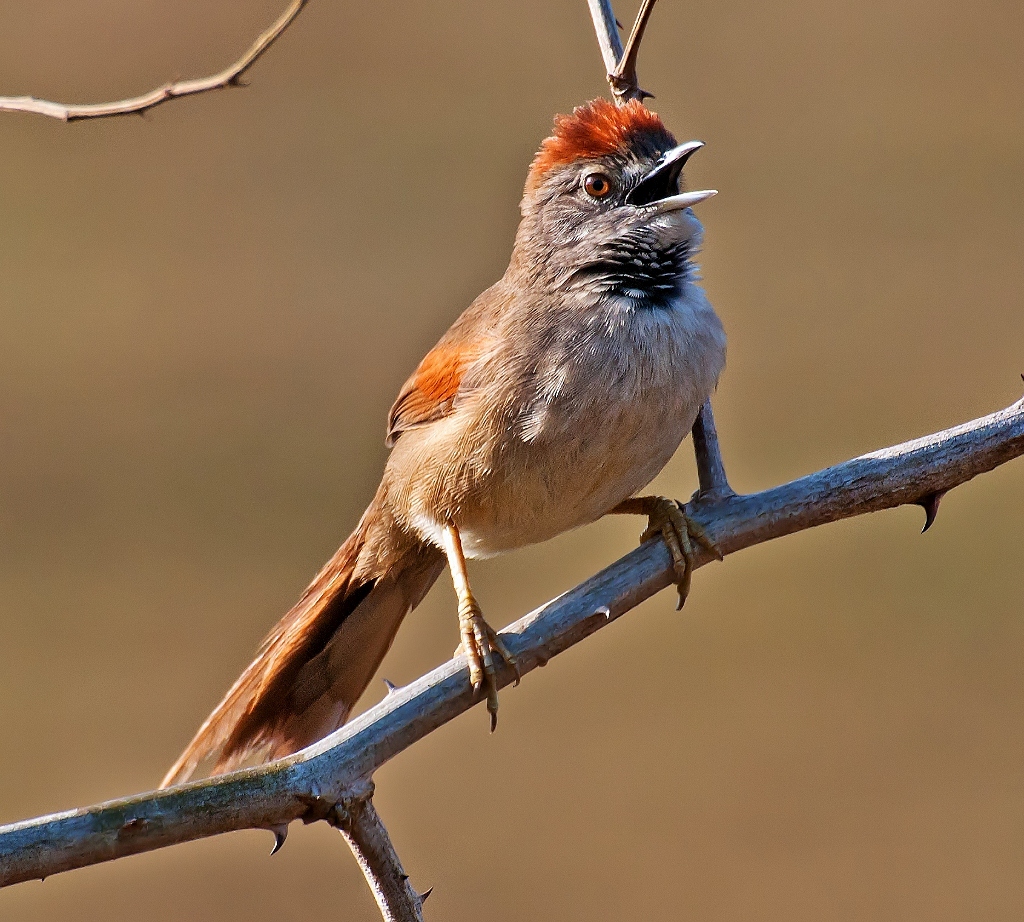 |
| Photo by Dario Sanches (Wikipedia) |
Common name:
pale-breasted spinetail (en); uí-pi (pt); synallaxe albane (fr); pijuí pechiblanco (es); weißbauch-dickichtschlüpfer (de)
Taxonomy:
Order Passeriformes
Family Furnariidae
Range:
This species is found from Costa Rica to northern Argentina, and from the eastern slopes of the Andes to the Atlantic coast of Brazil and the Guyanas. They are also found in Trinidad and Tobago.
Size:
These birds are 14-17 cm long and weigh 13-15 g.
Habitat:
The pale-breasted spinetail is mainly found in dry savannas and scrublands, but also in grasslands, pastures, agricultural areas, marshes and swamps and in forest clearings and degraded patches of former forests. They are present from sea level up to an altitude of 1.500 m.
Diet:
They are insectivorous, gleaning various arthropods from the foliage, usually in dense vegetation.
Breeding:
Pale-breasted spinetails nest in a large spherical structure made of sticks, dry grass and sometimes snake skins and spider webs. The nest has a long tubular entrance and is usually placed in low vegetation, up to 2 m above the ground. There the female lays 2-5 greenish-white eggs, which are incubated by both sexes for 14-18 days. The chicks fledge 16-17 days after hatching.
Conservation:
IUCN status – LC (Least Concern)
This species has a very large breeding range and is described as common. This species is expanding its range into areas that have been cleared.







